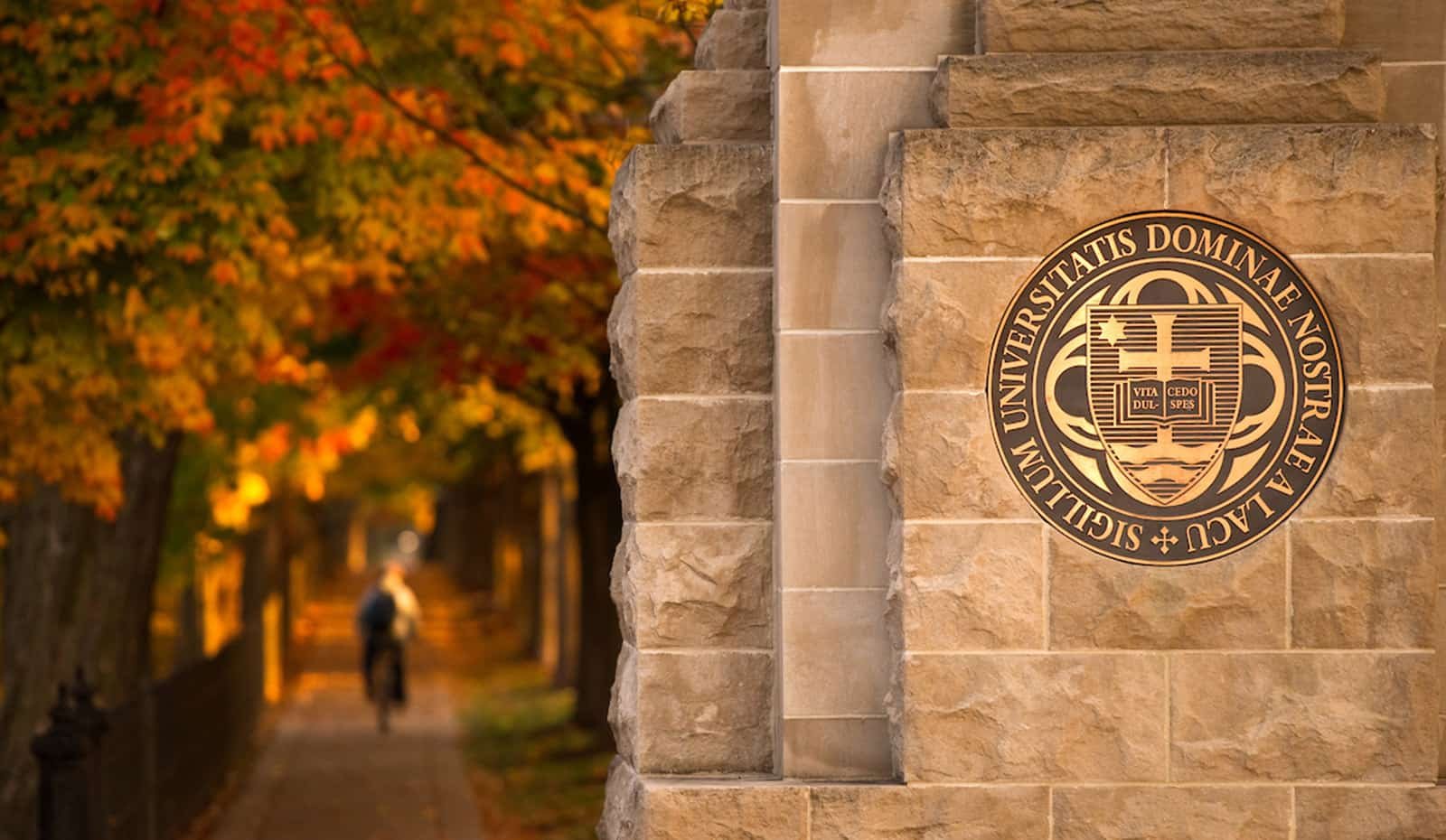Welcome to Notre Dame University
The University of Notre Dame was founded in November 1842 by Rev. Edward F. Sorin, C.S.C., a priest of the Congregation of Holy Cross, a French missionary order. It is located adjacent to South Bend, Indiana, the center of a metropolitan area with a population of more than 315,000. Chartered by the state of Indiana in 1844, the University was governed by the Holy Cross priests until 1967, when governance was transferred to a two-tiered, mixed board of lay and religious trustees and fellows. One of America’s leading undergraduate teaching institutions, Notre Dame also has been at the forefront in research and scholarship. The aerodynamics of glider flight, the transmission of wireless messages, and the formulae for synthetic rubber were pioneered at the University. Notre Dame always has been heavily residential, with about four in five undergraduates living on campus. Students come to Notre Dame to learn not only how to think but also how to live, and often the experiences alumni carry from residence hall communities at Notre Dame remain vivid over a lifetime.


“This college will be one of the most powerful means for doing good in this country.”
— Rev. Edward Sorin, C.S.C., founder of the University of Notre Dame du Lac
Notre Dame has grown from the vision of Father Sorin, who sought to establish a great Catholic university in America, and has remained faithful to both its religious and intellectual traditions. Today, we seek to be an enlightening force for a world deeply in need. Our departments of theology and philosophy are regarded as among the finest in the world while faculty in all departments participate in our mission to ensure that Notre Dame’s Catholic character informs all of our endeavours. From legal scholars who study civil rights and religious liberty, to scientists and engineers who investigate environmental protection, to sociologists who examine religious and ethical practices, Notre Dame continues to be a place where the Church does its thinking.
Notre Dame always has been heavily residential, with about four in five undergraduates living on campus. Students come to Notre Dame to learn not only how to think but also how to live, and often the experiences alumni carry from residence hall communities at Notre Dame remain vivid over a lifetime. The University always has attracted scholars who are interested in teaching and scholarship, men and women who know that a Notre Dame education is more than what is taught in classrooms and laboratories.
Notre Dame has a unique spirit. It is traditional, yet open to change. It is dedicated to religious belief no less than to scientific knowledge. It has always stood for values in a world of facts. It has kept faith with Father Sorin’s vision.
Notre Dame stands on 1,250 acres considered by many to be among the most beautiful possessed by any university in the nation. From the collegiate Gothic architecture and park-like landscape to exquisite outdoor sculpture and breathtaking views, Notre Dame’s campus is a visual splendor. Even its more recently constructed buildings that house state-of-the-art academic and student life facilities fit within a cohesive visual aesthetic that preserves tradition amid progress.
75
Undergraduate Majors
8
Colleges and Schools
8,923
Undergraduate Students
4206
Professional Students
Notre Dame is a
Top 10
collegiate workplace according to the Chronicle of Higher Education.
Notre Dame is ranked in the
Top 25
Notre Dame is ranked 12th in the country by College Consensus which averages the rating scores from publications such as Forbes, Money, U.S. News & World Report,and others.
